Case Report
Volume 2 Issue 4 - 2018
Poor Understanding of Prescribed Drugs Leads to Medication Error at Both Pharmacy and Patient End: A Survey Study to find Out the Underlying Factors.
1Department of Pharmacy, Southeast University, Dhaka, Bangladesh
2University of Texas at Dallas, Department of Chemistry and Biochemistry, Richardson, United States
3Consultant neurosurgeon, Gouri Devi Hospital and Research Institute Durgapur, MBBS, MS, General surgery, MCH neurosurgery from PGI Chandigarah), India
2University of Texas at Dallas, Department of Chemistry and Biochemistry, Richardson, United States
3Consultant neurosurgeon, Gouri Devi Hospital and Research Institute Durgapur, MBBS, MS, General surgery, MCH neurosurgery from PGI Chandigarah), India
*Corresponding Author: Md Shariful Islam, Department of Pharmacy, Southeast University, Dhaka, Bangladesh.
Received: November 01, 2018; Published: November 14, 2018
Abstract
This study is intended to estimate the types of medication errors, factors and cause of prescription errors as well as medication errors and prescription errors prevailed in hospitals. Illegible handwriting prescriptions issued by medical practitioners are an age-old, worldwide problem. Dispensing wrong medicine is a major public health problem in Bangladesh. The objective of the study is to get a picture of overall condition of medication error that caused by dispensing wrong medicine in Bangladesh and thereby set more accurate measures to minimize the occurrence as well as to find out the awareness about medication error among different classes people. A total of 100 patients were enrolled in this study. And a total of 100 medication dispensers were also included in this study. The study is performed in kurmitola General Hospital and some local pharmacy in Dhaka. Kurmitola General Hospital is situated at the Dhaka Cantonment area.
The data were collected from the hospital and pharmacy record, and through short interviews of patients, patient relatives and shop keeper of pharmacy. For this study, data collection forms were prepared based on information about patients living area, social class, educational level, monthly income and many other important things that help to research. Founding information from the data collection forms were help to make the study result. From the study it is found that among 100 patients 29% were taking wrong medicines and rest of them were taking right medicines. Though the number of patients taking wrong medicines is not huge but taking wrong medicines can come up with unrecoverable loss to the patients. In imitation of the study we came up with a idea that around 18% patients faced hazardous type of problems due of taking wrong medicines and rest of the others were not experienced with such problems.
Introduction
Some Doctors inscription is notoriously bad. However, writing defectively for a doctor is a matter of survival. In one eight hour shift she/he can write their signature alone fifty to one hundred or more times.
The doctor also realizes that what they write is not desired for the public to see, only for themselves and their companions. The doctors are the volume of paperwork that needs to be done for each patient encounter for the problems. Because of legal, each item done, found, or instructed, has to be documented prior to discharge [1].
Some basic definitions
Illegible prescription writing
Illegible prescription is another bad practice right now because Illegible prescription handwriting is technically unreadable, unreadable is used mainly in reference to texts that are dull, nonsensical, uninteresting, or difficult [2]. Discomfiture linked with this detective work far outweighs the extra effort needed to dot an „i‟ or cross a „t‟. Attempt to protection time by writing rapidly is thus a false economy [3-4].
Illegible prescription writing
Illegible prescription is another bad practice right now because Illegible prescription handwriting is technically unreadable, unreadable is used mainly in reference to texts that are dull, nonsensical, uninteresting, or difficult [2]. Discomfiture linked with this detective work far outweighs the extra effort needed to dot an „i‟ or cross a „t‟. Attempt to protection time by writing rapidly is thus a false economy [3-4].
Medication errors
Medication error is one more problem in the treatment process that conducts to or has the potential to lead to, harm to the patient. A medication mistake or error that may cause lead to improper medication and patient while the medication is in the control of health care professional, patient, or consumer. These problems may be related to prescribing, order communication, product labeling packaging, nomenclature, compounding, administration, education, monitoring and use [5]. Maximum medication errors are considered dormant. When a chemists or a druggist fill a prescription with the incorrect medication, patients typically realize this mistake once they have returned home and have taken the first dose. These types of causes of errors are usually identifiable and can be corrected before the error medication. Such as, incomplete patient information, unavailable of drug information, Miscommunication of drugs orders, which can involve defective handwriting.
Medication error is one more problem in the treatment process that conducts to or has the potential to lead to, harm to the patient. A medication mistake or error that may cause lead to improper medication and patient while the medication is in the control of health care professional, patient, or consumer. These problems may be related to prescribing, order communication, product labeling packaging, nomenclature, compounding, administration, education, monitoring and use [5]. Maximum medication errors are considered dormant. When a chemists or a druggist fill a prescription with the incorrect medication, patients typically realize this mistake once they have returned home and have taken the first dose. These types of causes of errors are usually identifiable and can be corrected before the error medication. Such as, incomplete patient information, unavailable of drug information, Miscommunication of drugs orders, which can involve defective handwriting.
Dispensing errors
Highest dispensing errors involve the dispensing of an incorrect medication, dosage strength and dosage form. Sound alike drug, look alike drug often causes confusion with ineligible prescription and verbal communication medication orders are errors likely [6,7].
Highest dispensing errors involve the dispensing of an incorrect medication, dosage strength and dosage form. Sound alike drug, look alike drug often causes confusion with ineligible prescription and verbal communication medication orders are errors likely [6,7].
Prescription errors
All of the reasons that direction to medication errors, in general, contribute towards prescription errors. Although, including lack of knowledge, using the wrong drug name, dosage form, abbreviation and incorrect dosage calculation [8]. Recently, studied in the US about 900 medication errors in children, probably 30% were prescription errors, 25% were dispensing errors and 40% were administration errors [9] and most common wrong dose was occurred by prescription error [10].
All of the reasons that direction to medication errors, in general, contribute towards prescription errors. Although, including lack of knowledge, using the wrong drug name, dosage form, abbreviation and incorrect dosage calculation [8]. Recently, studied in the US about 900 medication errors in children, probably 30% were prescription errors, 25% were dispensing errors and 40% were administration errors [9] and most common wrong dose was occurred by prescription error [10].
Materials and Methods
Sampling Technique
About 6 months of period, patients or patient relatives were selected from the hospital and pharmacy that were in treatment process & come in pharmacy for buying medicine. Usually three days in a week patients were come in hospital more than other days. So, these days were chosen to collect data.
About 6 months of period, patients or patient relatives were selected from the hospital and pharmacy that were in treatment process & come in pharmacy for buying medicine. Usually three days in a week patients were come in hospital more than other days. So, these days were chosen to collect data.
Place of study
The study was conducted in kurmitola General Hospital, and some hospital base pharmacy and local pharmacy in Dhaka.
The study was conducted in kurmitola General Hospital, and some hospital base pharmacy and local pharmacy in Dhaka.
Study period
Overall study period was approximately six months. To complete the study in time, a work schedule was prepared depending on different task of the literature review, selection of topic and development of the protocol. To complete the study in time, a work schedule was prepared depending on different task of the literature review, selection of topic and development of the protocol. Subsequent months were spending on official correspondence, data collection, data analysis, report writing and submission of report.
Overall study period was approximately six months. To complete the study in time, a work schedule was prepared depending on different task of the literature review, selection of topic and development of the protocol. To complete the study in time, a work schedule was prepared depending on different task of the literature review, selection of topic and development of the protocol. Subsequent months were spending on official correspondence, data collection, data analysis, report writing and submission of report.
Data collection
The data were collected from the hospital and pharmacy record, and through short interviews of patients, patient relatives and shop keeper of pharmacy. For this study, data collections forms were prepared based on information from journals and record books of hospital.
The data were collected from the hospital and pharmacy record, and through short interviews of patients, patient relatives and shop keeper of pharmacy. For this study, data collections forms were prepared based on information from journals and record books of hospital.
Data analysis
All the data checked after collection. Then data were entered into MS excel. The result was shown in bar, pie chart and percentage of risk patient was calculated. The questionnaire used in the survey for patients or patient relatives and shop keepers of pharmacy are given below (table 1 below):
All the data checked after collection. Then data were entered into MS excel. The result was shown in bar, pie chart and percentage of risk patient was calculated. The questionnaire used in the survey for patients or patient relatives and shop keepers of pharmacy are given below (table 1 below):
| Questionnaire for patients |
| Where do you live in? a) Rural b) Urban c) Small city |
| Education level- a) Below SSC b) SSC c) HSC d) Graduate |
| Monthly income (Tk. per Month)- a) 5000-10000 b) 10000-20000 c) 20000-30000 d) More than 30000 |
| Do you buy the medicine of in time course? a) Yes b) No |
| How much times have your doctor given to you? a) Short time (<3 min) b) satisfactory time (3-5 min) c) Long time (>5 min) |
| Have you understood the entire thing that your doctor said to you? a) Yes b) No |
| Do you understand your doctor’s hand writing and taking the medicine according to you? a) Yes b) No |
| Have you ever taken wrong medicine? a) Yes b) No |
| Have you ever faced a hazardous type of problem due to taking wrong medicine? a) Yes b) No |
| Questionnaire for Dispensers |
| Do you understand the writing of prescription all the time? a) Yes b) No |
| Have you ever dispensed wrong medicine without understand? a) Yes b) No |
Table 1: Questionnaire used for data collection.
Results
Area of residence of patients
From the study, it was seen that among 100 patients, 31% patients are living in rural area, 37% patients living in urban area and 32% patients living in small city as presented at table-2 and figure-1.
From the study, it was seen that among 100 patients, 31% patients are living in rural area, 37% patients living in urban area and 32% patients living in small city as presented at table-2 and figure-1.
| Area | No. of patients (%) |
| Rural | 31% |
| Urban | 37% |
| Small city | 32% |
| Total | 100% |
Table 2: Demographic presentations of patients.
Impression of social class
Among 100 patients, 21% patients were rich, 26% patients were upper middle, 31% patients were lower middle and 22% were lower in social class as presented at table-5.2 and Figure-5.2.
Among 100 patients, 21% patients were rich, 26% patients were upper middle, 31% patients were lower middle and 22% were lower in social class as presented at table-5.2 and Figure-5.2.
| Social class | No. of patients (%) |
| Rich | 21% |
| Upper middle | 26% |
| Lower middle | 31% |
| Lower | 22% |
| Total | 100% |
Table 5.2: Socioeconomic representation of patients under study.
Education level
Among 100 patients, 33% patients were below SSC, 21% were passed SSC, 26% were passed HSC and 20% were graduated presented in table 5.3 and figure 5.3.
Among 100 patients, 33% patients were below SSC, 21% were passed SSC, 26% were passed HSC and 20% were graduated presented in table 5.3 and figure 5.3.
| Level | No. of patients (%) |
| Below SSC | 33% |
| SSC | 21% |
| HSC | 26% |
| Graduate | 20% |
| Total | 100% |
Table 5.3: Educational representation of patients under study.
Monthly income (BDT per Month)
It was observed that among 100 patients, 28% patients were earned 5000-10000 BDT per month, 35% patients were earned 10000-20000 BDT. Per month, 21% patients were earned 20000-30000 BDT per month and 16% patients were earned more than 30000 BDT per month. So, most of the patients appeared were in low to mid economic status. As represented in table 5.4 and figure 5.4.
It was observed that among 100 patients, 28% patients were earned 5000-10000 BDT per month, 35% patients were earned 10000-20000 BDT. Per month, 21% patients were earned 20000-30000 BDT per month and 16% patients were earned more than 30000 BDT per month. So, most of the patients appeared were in low to mid economic status. As represented in table 5.4 and figure 5.4.
| Tk. per month | No. of patients (%) |
| 5000-10000 | 28% |
| 10000-20000 | 35% |
| 20000-30000 | 21% |
| More than 30000 | 16% |
| Total | 100% |
Table 5.4: Economical representation of patients under study.
Buying the medicine of in time course of patients tendency
It was seen that most patients were not buying medicine in time of course. They like to buy medicine one by one. From table 5.5, only 41% of patients bought the total medicines according to therapeutic duration.
It was seen that most patients were not buying medicine in time of course. They like to buy medicine one by one. From table 5.5, only 41% of patients bought the total medicines according to therapeutic duration.
| Tendency of patients | No. of patients (%) |
| Yes | 41% |
| No | 59% |
| Total | 100% |
Table 5.5: Distribution of tendency among patients for prescribed medicine.
Counseling time that doctors given to the patients
It was found that in most cases patients (47% of total patients counted) get less than 3 minutes of counseling time towards doctors for their ailment. Average counseling times observed were depicted in table 5.6 and figure 5.6.
It was found that in most cases patients (47% of total patients counted) get less than 3 minutes of counseling time towards doctors for their ailment. Average counseling times observed were depicted in table 5.6 and figure 5.6.
| Counseling time | No. of patients (%) |
| Short time (<3 min) | 47% |
| Middle time (3-5 min) | 34% |
| Long time (>5 min) | 19% |
| Total | 100% |
Table 5.6: Distribution of counseling time.
Understanding the entire thing that the doctor said to patients
From the study, it was seen that the most patients were not understand the entire thing that doctor said to the patients. Among 100 patients, 56%were not understand and 43% were understand the entire thing that doctor said to patients (table-5.7 and figure-5.7).
From the study, it was seen that the most patients were not understand the entire thing that doctor said to the patients. Among 100 patients, 56%were not understand and 43% were understand the entire thing that doctor said to patients (table-5.7 and figure-5.7).
| Feature | No. of patients (%) |
| Yes | 43% |
| No | 57% |
| Total | 100% |
Table 5.7: Patient understanding on doctor’s advice.
Understanding the doctor’s hand writing.
From the study, it was seen that the most patients were not understand the doctor’s hand writing. Among 100 patients, in 58% cases doctors’ prescription was not easily understandable to patients (table-5.8 and figure-5.8 below).
From the study, it was seen that the most patients were not understand the doctor’s hand writing. Among 100 patients, in 58% cases doctors’ prescription was not easily understandable to patients (table-5.8 and figure-5.8 below).
| Feature | No. of patients (%) |
| Yes | 41% |
| No | 59% |
| Total | 100% |
Table 5.8: Percentages of patients understanding the doctor’s hand writing.
Impact of not understanding both prescription and advice among patients.
It was observed that in 29% cases patients were taken wrong medicine as a consequence of not understanding doctors’ advice properly and also not understanding right way to take medicines (Table-5.9 and figure 5.9). It was harmful for those patients who are taking wrong medicine.
It was observed that in 29% cases patients were taken wrong medicine as a consequence of not understanding doctors’ advice properly and also not understanding right way to take medicines (Table-5.9 and figure 5.9). It was harmful for those patients who are taking wrong medicine.
| Feature | No. of patient (%) |
| Yes | 29% |
| No | 71% |
| Total | 100% |
Table 5.9: Percentages of patients taking wrong medications.
Number of patients facing adverse effects due to lack of proper counseling about medication.
From the study, it was seen that among 100 patients, 19% patients were faced a hazardous problem due to lack of proper counseling about medication. (Table-5.10 and Figure-5.10).
From the study, it was seen that among 100 patients, 19% patients were faced a hazardous problem due to lack of proper counseling about medication. (Table-5.10 and Figure-5.10).
| Feature | No. of patients (%) |
| Yes | 19% |
| No | 81% |
| Total | 100% |
Table 5.10: Percentages of patients suffering adverse effects.
Understanding of the doctor’s hand writing during dispensing at pharmacy.
It was observed that in 69% cases nearby dispensers easily read the prescription as because of knowledge about the prescribing behavior of that particular doctor and in part for experience. 31% dispensers found who were not spontaneous in reading or understanding the prescription may predispose to wrong dispensing (Table-5.11 and figure-5.11 below).
It was observed that in 69% cases nearby dispensers easily read the prescription as because of knowledge about the prescribing behavior of that particular doctor and in part for experience. 31% dispensers found who were not spontaneous in reading or understanding the prescription may predispose to wrong dispensing (Table-5.11 and figure-5.11 below).
| Feature | No. of dispensers (%) |
| Yes | 69% |
| No | 31% |
| Total | 100% |
Table 5.11: Percentages of dispensers understanding the doctor’s hand writing.
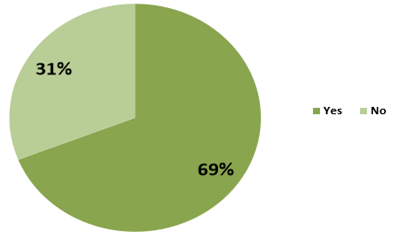
Figure 5.11: Graphical representation of dispensers according to understanding the doctor’s hand writing.
Dispensing wrong medicine without understanding
From the study, it was seen that the most dispensers who were not confident enough to understand the prescription hand writing correctly, tends to dispense completely wrong medication or changing medication simply based on idea (about 85% as in table 5.12).
From the study, it was seen that the most dispensers who were not confident enough to understand the prescription hand writing correctly, tends to dispense completely wrong medication or changing medication simply based on idea (about 85% as in table 5.12).
| Feature | Frequency (%) |
| Right medication | 15% |
| Wrong medication | 85% |
| Total | 100% |
Table 5.12: Frequency of dispensing wrong medication at pharmacy.
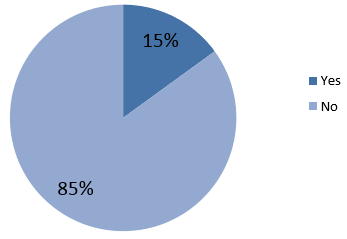
Figure 5.12: Graphical representation of dispensers according to dispense medicine without understand.
Discussions
According to the study we found that among 100 patients, 31% patients are living in rural area, 37% are living in urban area and rest of them which is 32% are living in small city area. So, we can say that most of the patients belong to urban area (table- 5.1). 21% patients belong to rich class, 26% belong to upper middle class, 31% belong to middle class and 22% belong to lower social class (table-5.2). From educational point of view, among patients appeared at health care, 33% were below SSC, 21% have completed SSC, 26% have completed HSC and rest of them which is 2% were graduate, reflecting that most of the patients were not well educated (table 5.3) requiring proper counseling time as well as to make them understand their medication at pharmacy end. From economic distribution among patients under study, most of the patients belong to low-mid economic status reflecting rational drug therapeutic approaches for their ailment.
Polypharmacy practice among doctors is so prevalent that it exerts an irrational as well as an economic burden to patients. Which reflects in present study upon finding 59% patient is not buying the prescribed medications in required quantities to fulfill the therapeutic regimen. We found that most of the patients prefer to by their medicines one by one rather than buying the whole course all together at a time (table-5.5). Moreover, in the accordance with the study we came up with an idea that most of the doctors were not giving enough time to their patients and a few number of doctors were giving proper time to their patients which is not good for the patients whom are seeking for proper treatment. In most cases the counseling time was below 3 min (table-5.6) which is not sufficient for a doctor to properly understand the patients’ condition properly that reflect into polypharmacy, unnecessary laboratory tests and overall irrational approaches. This is multifactorial and most of the cases huge patients pool. Against a doctor often causes increased workload to doctor. Most of the patients are unable to understand what their doctors are trying to say to them. About 56% of the patients do understand the talking of their doctors and about 43% patients were able to understand the whole thing that is their doctors are trying to make them understand. It quite important to get along with the doctor and get a clear conception what the doctors are prescribing to the patients. Otherwise with the half understanding patients get confused what to do and what not to do (table-5.7).
According to the study, it was found that most of the patients were unable understand the doctor’s handwriting which lead to make mistake by the patients which can come up with great disaster (table-5.8). The study of high incidence of medication documentation errors in a Swiss university hospital due to the handwritten prescription process shown that the handwriting readability was rated as good in 2%, moderate in 42%, bad in 52%, and unreadable in 4% [11]. If we comparing our founding result with this result, it shown that both are same position because our result found that among 100% of patient most patient were not understand the doctors handwriting.
The problem of illegible prescription extends to dispensers. Although many of the dispensers are able to understand the doctor’s handwriting and dispense correct medicines to the patients, some of them are unable to understand doctors writing in a sense which cause a great problem to the patients (table 5.11). In accordance with the study it was found that around 15% of the dispensers dispense medicines without understanding the doctors writing. Due to wrong dispensing patients face hazardous problems which are not acceptable. So dispensing should be done with great care and attention (table-5.12). Among patients, 29% were taking wrong medicines and rest of them were taking right medicines. Though the number of patients taking wrong medicines is not that huge but taking wrong medicines can come up with unrecoverable loss to the patients (table-5.9). Around 18% patients faced hazardous type of problems due of taking wrong medicines and rest of the others were not experienced with such problems. Even though the amount is not that significant whom are facing this kind of problems it is not desirable as medicines are meant to be good for the patients (table-5.10).
Conclusion
Bangladesh belongs to low economy country and most of the peoples stays at low to mid economic status. In country number of patients per doctor is large enough but provisions should be made to improve the quality of treatment to the patients. Doctors should provide proper counseling time to patients for proper identification of the disease and should provide treatment based on the patients clinical needs not writing drugs for every complaint of the patient. Patients should be counseled for their treatment goal and should be motivated to fulfill the treatment course. On the contrary, there is no qualified pharmacist who can provide good care regarding dispensing lifesaving drugs to patients. From present study, it was observed that wrong medication is dispensed to patients without consulting to doctor for confirming the right now. At present, patients only know when to take medicines according to prescription by the dispenser. But it is not still possible to inform patients about how to take, what would be the time interval in case of multiple drug administration, possible common side effects. This necessitates the requirement of a pharmacist at both community and health care level to improve medication usage for the patients.
Acknowledgement
The authors would like to thank the Department of Pharmacy, Southeast University, Bangladesh for their support during the survey. Also thankful Md. Shariful Islam (PMD Officer at Liberty Business Associates) and Dr. Saikat Saha (Consultant neurosurgeon, Gouri Devi Hospital and Research Institute Durgapur, MBBS, MS, General surgery, MCH neurosurgery from PGI Chandigarah).
The authors would like to thank the Department of Pharmacy, Southeast University, Bangladesh for their support during the survey. Also thankful Md. Shariful Islam (PMD Officer at Liberty Business Associates) and Dr. Saikat Saha (Consultant neurosurgeon, Gouri Devi Hospital and Research Institute Durgapur, MBBS, MS, General surgery, MCH neurosurgery from PGI Chandigarah).
Consent
It is not applicable.
It is not applicable.
References
- Dr. Sal. "DoctorHandwriting."DoctorSecrets”. (http://www.doctorsecrets.com/secr ets-in-medicine/doctor-bad-handwriting/why-doctors-write-so-bad.html.), 1/26/2017.
- Hochhauser M. “Which prescription for the illegible and unreadable DTC (direct-to-consumer) brief summary--major surgery or euthanasia? Managed care quarterly 10.3 (201): 6-10.
- Rodriguez-Vera F., et al. “Illegible handwriting in medical records”, Journal of the Royal Society of Medicine 95.11 (2002): 545-546.
- Gakhar H, Sawant N, Pozo J., “Audit of the legibility of operation notes. In: Royal College of Surgeons of Edinburgh Audit Symposium 2005”, Edinburgh: RCS Ed, (2005).
- Tipnis and Bajaj, “Text Book of Clinical Pharmacy”, (2003).
- Harris MH. “To err is human-the fallible physician.” South Dakota journal of medicine 57.1 (2004): 9-11.
- Kohn LT., et al. “To err is human: Building a safer health system”. Washington DC, National Academy Press, (2000).
- Miller MR., et al. “Computer based medication error reporting: insights and implications”. Quality and Safety in Health Care 15.3 (2006): 208-213.
- Dean B., et al. “Prescribing errors in hospital inpatients: their incidence and clinical significance”, Quality and Safety in Health Care 1.4 (2002): 340-344.
- “A Spoonful of Sugar—Medicines Management in NHS Hospitals”, London Audit Commission, (2001).
- Hartel MJ., et al. “High incidence of medication documentation errors in a Swiss university hospital due to the handwritten prescription process”, BMC health services research 11.1 (2011): 199.
Citation:
Md Shariful Islam., et al. “Poor Understanding of Prescribed Drugs Leads to Medication Error at Both Pharmacy and Patient
End: A Survey Study to find Out the Underlying Factors.” Medical Research and Clinical Case Reports 2.4 (2018): 260-272.
Copyright: © 2018 Md Shariful Islam., et al. This is an open-access article distributed under the terms of the Creative Commons Attribution License, which permits unrestricted use, distribution, and reproduction in any medium, provided the original author and source are credited.



































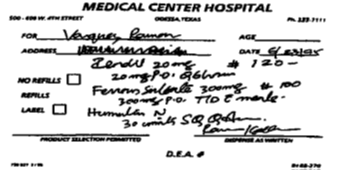
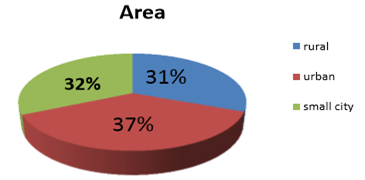
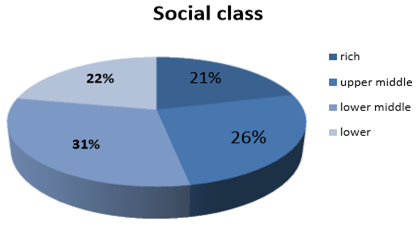
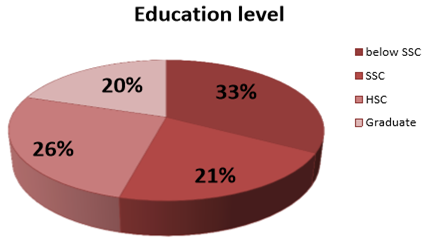
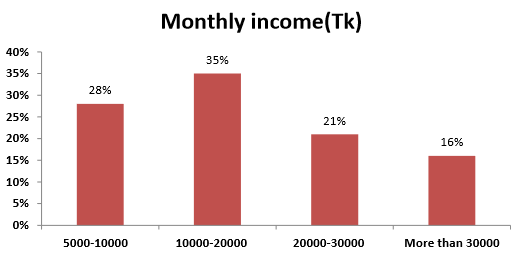
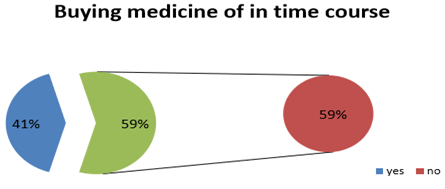
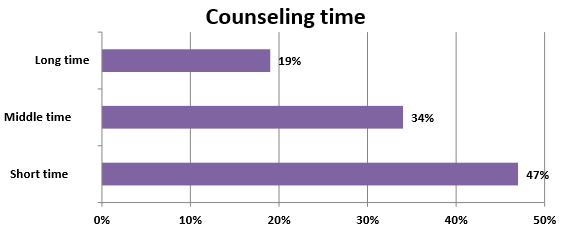
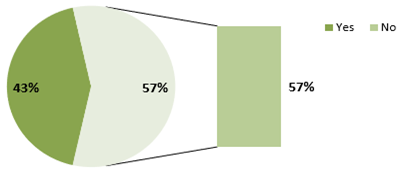
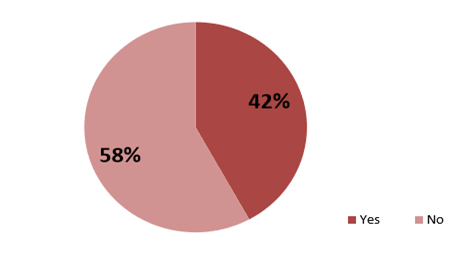
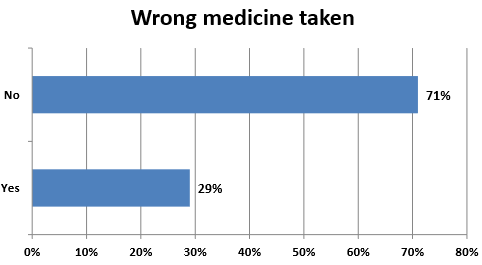
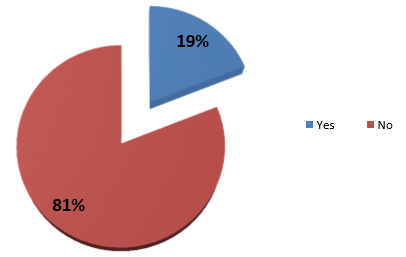
 Scientia Ricerca is licensed and content of this site is available under a Creative Commons Attribution 4.0 International License.
Scientia Ricerca is licensed and content of this site is available under a Creative Commons Attribution 4.0 International License.